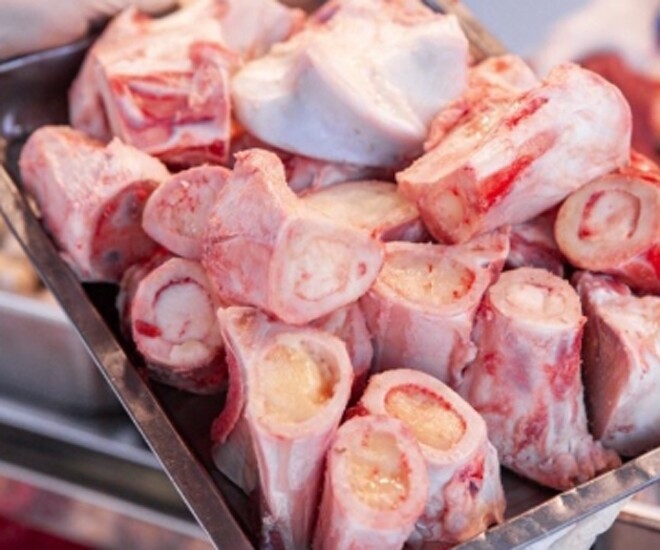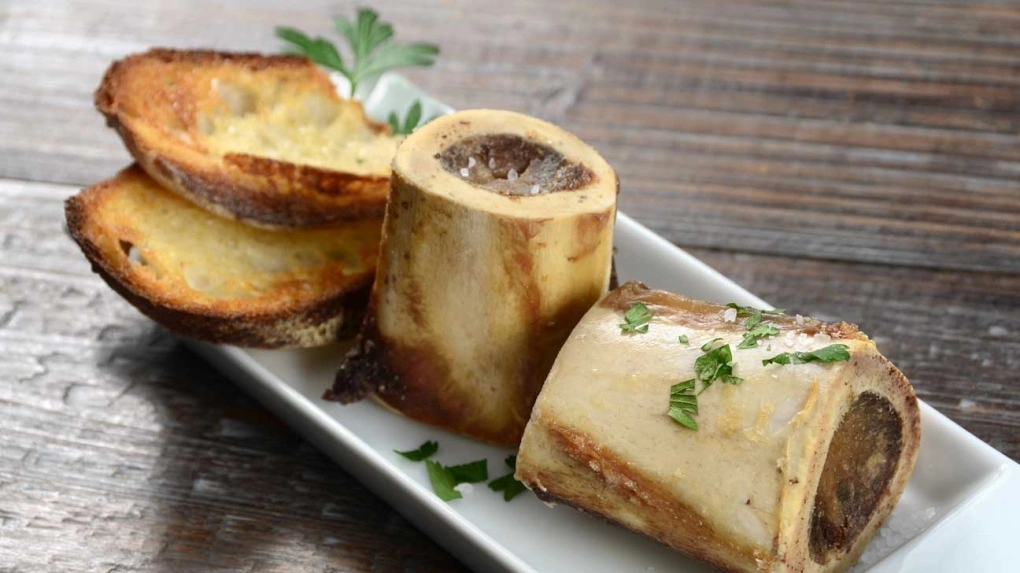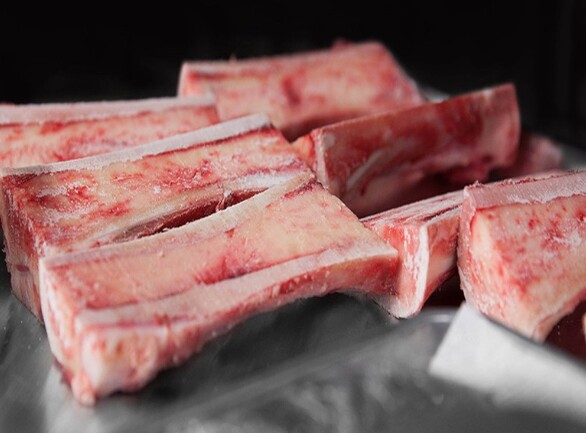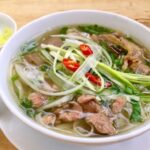
Bone marrow has a cloudy white or slightly ivory color and a creamy texture when raw, nestled inside the bone. When cooked, the marrow becomes translucent and fatty, with a soft and silky mouthfeel. The flavor profile of beef bone marrow is distinctive: fatty yet not cloying, subtle yet savory, carrying a natural sweetness from the bones and meat.
Good-quality bone marrow should have a firm texture, not mushy, and should not have an unpleasant odor. When consumed, it melts on the tongue, offering a delightful creamy sensation, making the dish all the more enticing.
Beef bone marrow is a versatile ingredient that can be used in a variety of dishes, ranging from humble home-cooked meals to upscale restaurant fare. One of the most popular ways to use it is to cook it into a broth for dishes like beef pho or Hue beef noodle soup, imparting a subtle sweetness and light fattiness without the need for additional flavor enhancers.
Additionally, grilled bone marrow with scallions is a beloved delicacy: the fatty marrow is grilled over charcoal, topped with scallion oil, and served with crispy bread. Bone marrow stewed with vegetables is a nourishing option for those seeking to restore their health, as it is both flavorful and easy to digest. Restaurants often feature creative dishes such as bone marrow stir-fried with red wine sauce, grilled with cheese, or served with a European-style salad, offering a novel and sophisticated dining experience.
Regardless of the preparation, bone marrow retains its characteristic creamy flavor and nutritional value, making it an enticing highlight of any meal.

Beef bone marrow is commonly available at traditional markets, specialty food stores, and supermarkets. Prices range from 150,000 to 250,000 VND per kilogram, depending on the type of bone and freshness. Choose bones with full, non-watery marrow that appear clear and firm.
Additionally, some places offer frozen bone marrow or pre-separated marrow, which is convenient for busy individuals or restaurants requiring quick preparation.
Nutritional information per 100g of bone marrow: Calories: 786 kcal, Protein: 6.7g, Fat: 84.4g, Iron: 4.5mg, Phosphorus: 107mg, Thiamin: 0.04mg, Niacin: 0.2 mg, Vitamin A: 240 IU.
Health Benefits of Bone Marrow
Promotes Bone and Joint Health
Bone marrow is an excellent source of calcium and phosphorus, essential minerals for building and maintaining strong bones. Incorporating bone marrow into your diet helps maintain bone density and may reduce the risk of osteoporosis as you age. Additionally, the significant collagen content in marrow improves bone and joint flexibility while enhancing skin health.
A Valuable Source of Protein
Approximately 50% of bone volume and one-third of bone weight is protein. Insufficient protein intake can hinder bone regeneration, leading to decreased bone density and accelerated bone loss. With 6.7g of protein per 100g, bone marrow is an ideal nutritional source to support optimal bone mass development during growth and slow down age-related bone degeneration.

Reduces Inflammation and Joint Pain
Bone marrow is rich in glucosamine, a prominent compound known for its ability to alleviate pain and inflammation in the joints. According to a 2005 study published at Queen’s University (Canada), glucosamine effectively improves mobility and reduces pain in individuals with osteoarthritis. Moreover, the combination of glycine and linoleic acid in bone marrow provides comprehensive anti-inflammatory effects, greatly benefiting those with joint issues.
Supports Weight Management
Obesity not only impacts physical appearance but also increases the risk of joint inflammation, particularly due to the excess pressure on the knee and other weight-bearing joints. Bone marrow contains a rare hormone called adiponectin, which promotes fat breakdown and energy metabolism regulation. A 2015 study by the University of Michigan (USA) found that consuming adiponectin-rich foods like bone marrow can effectively control weight, thereby reducing joint stress and improving inflammation-related pain.
Is Bone Broth Good for Making Pho?
The culinary world, especially the art of crafting delectable broths for pho, is an ancient tradition that has evolved over centuries. The key to this iconic Vietnamese dish lies in the delicate balance of flavors achieved through a meticulous bone broth preparation process. Crafting this broth is an art, with chefs carefully selecting pork and beef bones to simmer for hours, unlocking a depth of flavor and a host of health benefits that have become the hallmark of this beloved culinary treasure.






































